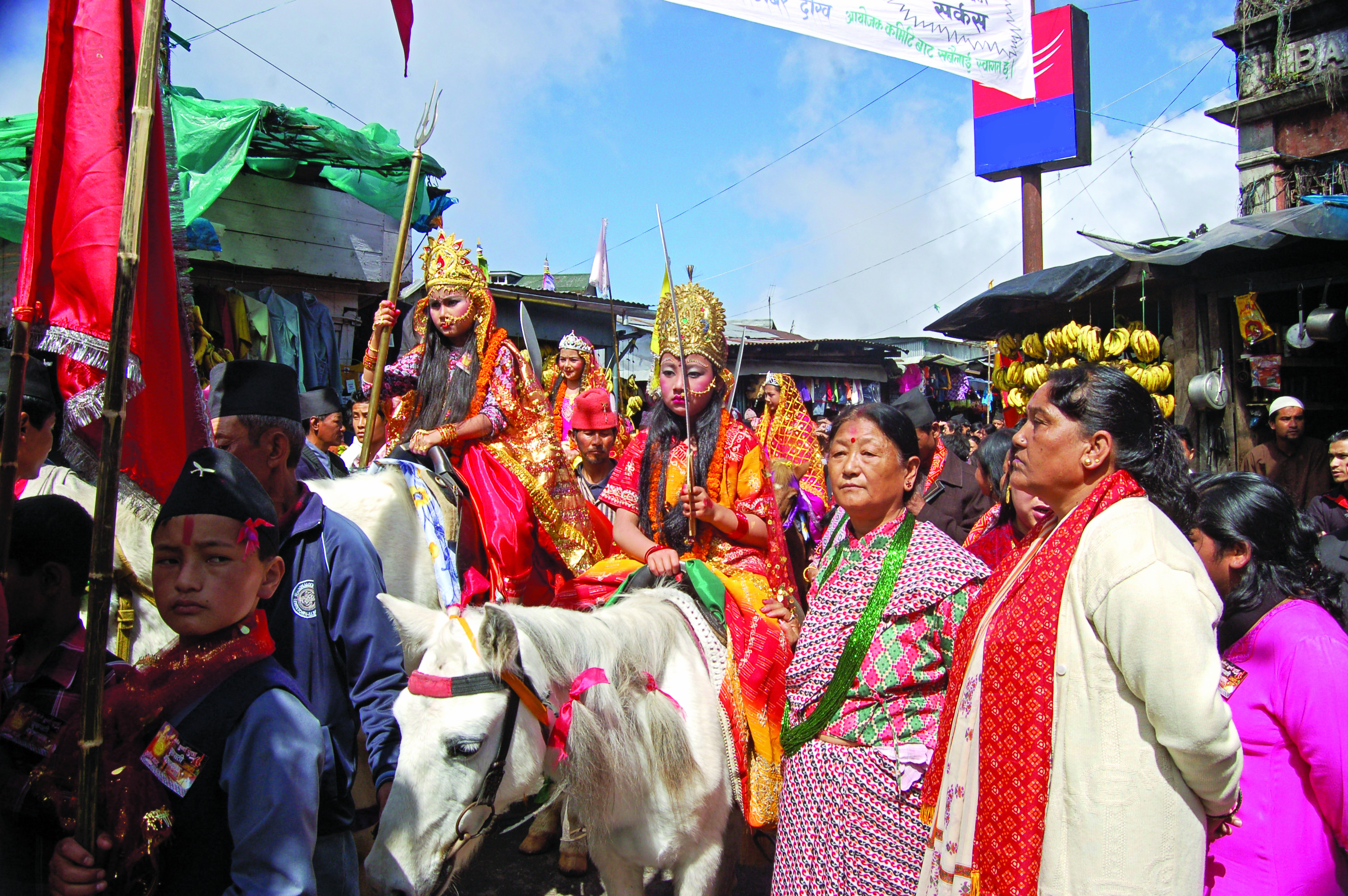Durga Puja in the Hills: A cultural conflation
The picturesque Hill towns come alive during Durga Puja, keeping pace with the grandeur of the plains, highlighting unique and impressive cultural performances every year, despite the dwindling Bengali population

In stark contrast to the Puja of the plains, the Hills pose a different picture. Steeped in tradition and in the region’s signature simplicity, Durga Pujas in the Hills witness a nine-day-long commemoration by the Gorkha community.
The festival begins with the “Ghatasthapana” and culminates with “Dasain” on the 10th day while the seventh day marks “Phulpati”, another important event in the 10-day long celebration.
In the bygone days, during Nauratha (nine days of Durga Puja), religious hymns like the ‘Chandi’ and raga-based classical music used to be sung.
In the remote villages, which did not have enough sources of entertainment, large swings known as ‘Lingey Pings’ used to be erected on long bamboo poles on which girls and boys, mostly teenagers, swung while singing folk songs. However, with the advent of the Internet and cable TV, ‘Lingey Pings’ has become a thing of the past.
On the day of Phulpati, Goddess Durga is worshipped with flowers and leaves that are carried in a ‘doli’ (palanquin) and taken all over the town in a colourful procession. Cultural organisations take part in the rally dressed in traditional attires, depicting the rich cultural diversity of the Hills accompanied by the ‘Naumati Baja’ (traditional musical ensemble). While men sport the Dawra-Surwal and Nepali topis (hats), women dress in traditional Guneu Cholo and Fariya.
The most important part of ‘Phulpati’ is the Lakhey dance — one of the oldest traditional dance forms. Dancers wearing masks and carrying swords portray the mythological story of the slaying of the demon Mahisasura by Devi Durga. Young girls, more commonly known as Kumaris, are worshipped as different forms of the goddess while processions with weapons also form an integral part.
“Dasain continues as one of the most important festivals with people across all age groups taking part. Many youths residing across India or abroad try to come home for Dasain. It is time for festivities and celebration in the Hills and continues till Purnima (full moon),” stated Devendra Pradhan, a resident.
However, for the weary tourist, homesick for Durga Puja back home, there is the oldest puja of the Hills, organised by the Nripendra Narayan Bengali Hindu Hall (NNBHH), which touches 109 years this year.
In 1914, the Bengali population started the Durga Puja at the temple. Great personalities like Sister Nivedita, Kazi Nazrul Islam, Acharya J C Bose and others paid a visit to this hall. It is said that K L Saigal, the legendary singer, had once offered ‘pushpanjali’ here during Durga Puja.
During the days of the British Raj the idol used to arrive from Krishnanagar by train to Siliguri. From there, it used to be brought to Darjeeling by the Darjeeling Himalayan Railway (or the toy train), using two engines — one in the front and the other in the rear. Now, the truck has replaced the train.
In the past, ‘Bisarjan’ (immersion) was also unique. A procession used to be accompanied by a police band and the members, dressed up in traditional attires, sang devotional songs all along the way.
The image used to be carried on a bamboo structure by the youngsters and taken all over the town and then immersed in Kakjhora, a spring. On their way, the procession used to halt at different affluent Bengali homes for rounds of refreshment. The ultimate halt before reaching Kakjhora was the Burdwan Palace. The Maharaja of Burdwan used to see the face of the idol and used to offer a golden “mohar” (coin).
Nowadays, the police band is missing and so is the Kakjhora which has become a victim of illegal constructions. However, the image is still taken out all over the town and then finally carried by truck to a spring called Bangla Khola near Sonada.
“We have tried to preserve the essence of the Puja as it was 100 years ago. However, the biggest problem we face these days is the steadily diminishing Bengali population. Though all communities pitch in to help, the Puja is hosted by the Bengali community of Darjeeling town. Most of the old Bengali families of Darjeeling, especially the youths, have migrated. Even organising the Puja is becoming difficult, let alone cultural events,” stated Gopal Dey, one of the organisers.
The other important Pujas in the Hills are those organised by the Bengali community in Kurseong and Kalimpong.
In Kurseong, the Puja is organised by the Rajrajeshwari Bengali Association which has a rich history of its own. It will be celebrating 106 years this time. The most famous Durga Puja in Kalimpong is held by Kalimpong Milani Club founded in 1929.




